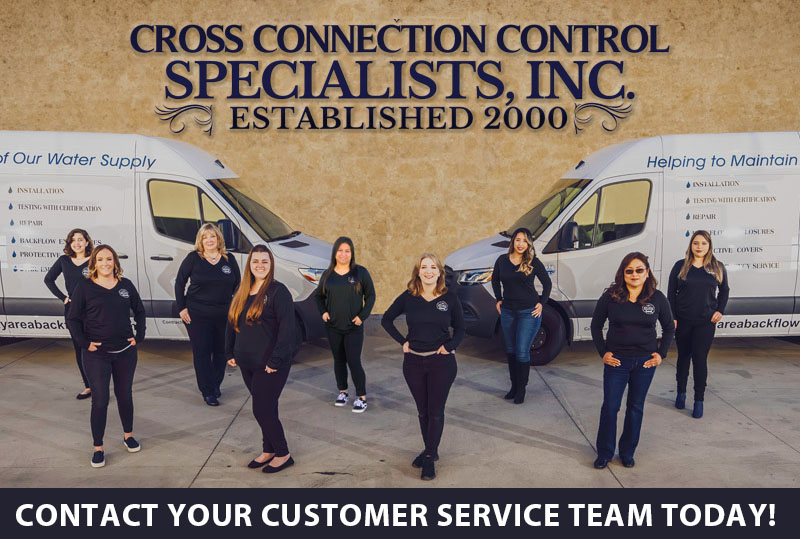State Water Resources Board
History and Regulations:
Regulation by the US Congress for Public Health Service began as early as 1912 when surveys and studies for water pollution along with the standards for contaminant levels as it is related to drinking water were adopted to protect the public water supply.
The American Water Works Association, in 1925 adopted a resolution stating that Cross-Connections cause illness and that no connection shall be established between potable and non-potable water supplies. This organization is still active today, establishing guidelines and working with both state and local water purveyors along with managing the licensing of both the certified backflow testers and the cross-connection control specialists.
University of Southern California Foundation for Cross-Connection Control and Hydraulic Research in the early 1940's the began writing specifications for backflow preventers, and field-testing procedures. It was not until 1970, however, that training began for backflow prevention assembly testers and not until 1988 that cross-connection control specialists started being licensed. Today the University of Southern California Foundation for Cross Connection Control and Hydraulic Research is responsible for researching, developing, and promoting standards for backflow prevention and cross-connection control.
In 1973 the EPA (Environmental Protection Agency) published its first Cross-Connection Control Manual, which was distributed to water suppliers. This manual sets guidelines for potable water distribution, monitoring, water quality and accountability.
In 1974 the SAFE WATER DRINKING ACT was adopted to protect the public health by regulating the public drinking water supply. Under this law the water purveyors are responsible for providing quality water delivered to the service connection. The EPA sets national health standards, but the sates have the right to create stricter laws for maintaining safe drinking water.
The State of California adopted Title 17, in 2008. This department defines the types of water supply systems, the official standards developed and approved by American Water Works Association (AWWA), the definitions of cross-connections, evaluations of the degree of potential health hazard at any user's site and the determination of the required backflow protection. The intent of the regulations within Title 17 is to provide safeguards for our domestic water supply and ensure that the water is potable and does not endanger the lives or health of the general public. It is the water purveyor's responsibility to protect and enforce the requirements outlined in (7605) regarding annual testing & maintenance of backflow prevention assemblies and to maintain those records. This regulation has been superseded by the Cross Connection Control Policy Handbook, which went into effect on July 1, 2024.
Title 22 California Code of Regulations, State Department of Health Services, Chapter 3 defines types and uses for Disinfected Secondary or Tertiary Recycled Water. The use of recycled water includes but is not limited to: landscape irrigation, agriculture irrigation, construction water, water for industrial purposes, etc. Each use of recycled water must have a permit and be in compliance with all program rules, conditions, and regulations. Design plans must be submitted to the local recycled water retailer who has authority over the program. Once installed it is the customer's responsibility to contract with an AWWA Certified Cross-Connection Control Specialists to perform a Cross-Connection Control Shutdown Test prior to connecting to the water retailers recycled water system. This test is to ensure the absolute separation of the recycled and potable water systems. Test procedures are found in Appendix J of the Uniformed Plumbing Code. The end user is responsible for retaining the specific operation and maintenance of the site and must provide written documentation annually to the Water Retailer.
The Cross Connection Control Policy Handbook went into effect on July 1, 2024. The State Water Resources Control Board issued this handbook to update and define the laws regarding water distribution. The purpose of the new laws is for the protection of public health through the established standards intended to safeguard the public water systems which distribute our drinking water. The handbook has specific guidelines for water purveyors, backflow service companies and plumbing companies for testing, repairs, installation, and maintenance of backflow devices which helps to protect against substance backflowing into the water distribution system. In addition, it defines the requirements for Cross Connection Control Surveys and Shutdown Tests. The CCCPH replaced the existing cross-connection control and backflow prevention regulations in title 17.
For further information visit: https://www.waterboards.ca.gov/drinking_water/programs/


